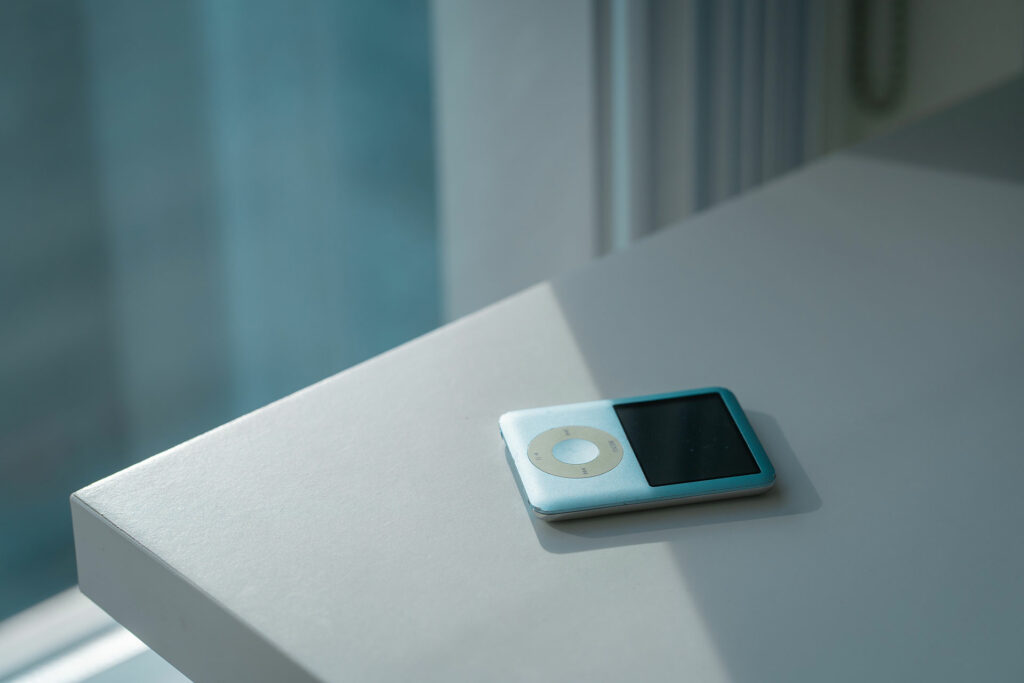For the past few months, I have been somewhat obsessed with these new Gallium Nitride (GaN, for short) amplifiers. Long-time Stereophile writer and classical music recording engineer John Marks was the first to hip me to the concept via an audiophile amplifier that Peachtree Audio released about a year ago that was designed with GaN FETs instead of MOSFETs. I’ve been fascinated ever since. We did a whole featured news story on GaN amplifiers, explaining the topic and its many benefits. We’ve got a review of one of the higher end Gallium Nitride amps in the market from AGD Productions Tempo di GaN, which is a $5,500 amp that Michael Zisserson has reviewed for an upcoming fall 2023 issue. Steven Stone also has a less expensive example of a GaN amplifier from Orchard Audio StarKrimson that is priced more in the mid-$2,000 range, which will also post later in 2023. Even Definitive Technology is getting in on the GaN craze by using the amplifier technology in their new reference bi-polar speakers.

GaN is becoming a major technological trend in the audiophile world that, in short, allows for a nearly perfect, Class-A-like performance from a Class-D switching amp that specifically has a very high switching frequency (twice that of a standard Class-D amp). GaN amps (learn more here) can sound and output signal like a single-ended triode amp or a Class-A designed amp but with more power output while literally sipping power from the wall. Many tube amps lose upwards of 80 percent of the power that they draw from the wall just in heat. That’s brutally inefficient. GaN amps lose about six percent of the modest power that they draw from the wall.
GaN amps are physically small even when packing a pretty heavy duty, internal power supply. They also don’t need big, heavy, expensive heatsinks. GaN amps ship more easily because of their diminutive weight but still double down power into 4 and again into 2-ohm loads. GaN amps have a lot of new and unique advantages and they aren’t even that crazy expensive by today’s audiophile standards. They are changing the game for what an audiophile amp needs to be, how it performs, how it looks, what it weighs, how it uses power, and what it costs.
Challenging Audiophile Standards and Principals?
Is it possible that a $5,000 audiophile amplifier performs better than one made in Switzerland for, say, $30,000, $100,000, or more? Is it possible that an audiophile amplifier that is quite small in size (three standard rack spaces high, just a few inches) could perform and measure better than one costing $50,000 and that weighs over 200 pounds? Is it possible that an amp that uses very little power from the wall sounds and measures just like a SET (single ended triode) or Class-A amp but doesn’t even affect your power bill like a Class-A amp will?
This sounds like crazy talk, but it’s all true.
The question is: in an hobby that worships the past, can traditionalist audiophiles embrace something that is new and better specifically when the new and better doesn’t follow any of the well-established standards and practices of a bygone era?
It is a bit of a mind-fuck isn’t it?
Everything that we’ve been told about amps is now not really the gospel. New technology offers us better-cheaper-more-powerful-better but there are those who are ready to fight. New is bad to many stalwart audiophiles and that is not a good thing but we know that change is hard, even when it is forced upon us.

What’s Better: Having Access to Every Recording Ever Made for a Month or One New Vinyl Record?
I’ll never forget that little square box that arrived in 2001 at my old offices located in Century City. It was from Edleman Public Relations and it came with a note in between the outer box and the inside box saying “Please accept this new device, if your publisher will allow it but note, any news or reviews on this item is embargoed for two weeks.” It was an Apple iPod and holy shit did it change my world. No longer did I need to travel with a portable Compact Disc player and a plastic container of my best and beloved CDs that were not in their protective jewel cases. Now, with a deck-of-cards-sized little bit of technology, I could carry around easily 500-plus albums in the palm of my hand. Battery life on the Generation One iPod could cover me musically from Los Angeles to New York (if not to London or Paris) without recharging. A pair of Etymotic EA4 in-ear-monitors with custom-fitted ear molds made my travel rig even smaller, more powerful, and outright awesome. I gave the Apple iPod AVRev.com’s Product of the Year award but the audiophile print magazines didn’t show the same level of love, even though the game had clearly changed – and for the better. Embracing the past, for them, was just too alluring even when the future of music playback was already obviously here.
Roll the tape forward to today and we have $15 monthly streaming music services that offer literally (nearly) every recording ever made or dreamt of available to audiophiles via any number of ways of easy access be it an end point (Sonos, Bluesound, or any number of others), from a smartphone or tablet, or even via streaming options built into an increasing number of consumer electronics components like AV preamps, 32-bit DACs, and beyond. The quality of these tracks are at least Compact Disc level and often much closer to 24/96, which is really close to the level of a master tape (digital or analog) in terms of resolution and bandwidth, paired with very low distortion. Yet, somehow today the audiophile traditionalist are more in love with audiophile turntables than ever before. There’s no denying vinyl’s collectability. It is an analog format in an overly digital world filled with blue light from devices, computer screens, and constant digital distractions. If you want to listen to a classic rock or jazz recording on the format that it was released on back in the day, vinyl is the way to go. At the same time, should a young audiophile invest $15 to $30 or more per LP in a modern-day music collection (or $15 per CD like many of us Boomers and GenXers did when there was no other option) versus growing one’s audiophile system, improving acoustics, or even just saving the money?
Change Taking Places…
Change is coming to the audiophile world. It always does… plain and simple. There are those who fight anything and everything new and that is their prerogative, I guess. But it does nothing to make an often-quirky hobby more approachable to younger people who love music, who love technology, and who might want to be part of our audiophile community.
One of our stated editorial missions here at FutureAudiophile.com is to improve the inclusiveness of our hobby. Being open-minded enough to put stereotypes aside and embracing the latest new technologies when they present themselves in a way that is progressive and science-based will only help our cause as we reach out to new high-performance audio enthusiasts. While there will always be people who fight an inevitable change in this hobby, we can do better than that and embrace that what comes next might challenge our standards and stereotypes about audio. And perhaps that isn’t such a bad thing?




Technology is a means to an end. If it makes better sound, and makes better sound more affordable, then it’s a good thing in my book. I’ve only heard GaAs amplifiers at shows, so I can’t make any definitive judgments, but Jerry, I must say your article has me intrigued.
These new technologies are game changing.
You and I have been around for a while but few times have things changed this much in electronics. This is a big one.
The issue is: how will established consumers deal with some of the stereotypes that they’ve always known – being shattered? Those big heavy amps aren’t as good as these little, chip based amps. And they are way less money. Crazy. Disruptive.
One of my favorite things to do (I have done it twice) is to take my Tempo di GaN and put it behind my system hooked up, but leave my large Bricasti Mono Block amplifiers powered on. I am 2/2 for fooling a coupe of very good listeners that we were using this tiny amplifier the whole time.
That would SO MESS with people’s mind.
If you could hand them the Tempo di GaN amp – they would be even more blown away. The thing is SO LIGHT.
I was able to A-B the GaN amp with a Pass Labs class-A amp. They have a LOT in common. I bought the Pass amp but-but-but the heat issue is major. The GaN amp has NO HEAT. Incredible. 🙂
On Class-D/GaN amps: Well, aerospace and defense along with cellular 5G carriers are pouring money into them right now, so maybe some of that will trickle down and pay dividends to us audiophiles. I still love Class A and Class AB amps just fine. They are an already proven and excellent technology. I never understood the push lately to Class D. I mean, why? The amount of energy used by audiophiles’ pails in significance to say that used by electric shavers, but we don’t see people saying “don’t shave”. No, “saving the Earth” really has no bearing on our using a bit of power for amps. So, still why the push to Class D? At least it is *starting* to compete with Class A and AB amps and should get better. We can hope. And we can hope that Class A and AB are still offered as options. Variety and choice for consumers is a good thing.
There’s always going to be a market for tube or valve amps no matter how good GaN or whatever else comes along can be.
Regarding why buy an album or a CD? Well, as some on YouTube have shown (and many on audiophile forums agree) the sound quality is often BETTER than streaming due to jitter and other issues. Those on forums like Audiogon say to equal the sound of a Redbook CD playing on a local CD transport, you need to spend about $4K on your digital front end, replace all your power supplies with better linear ones, and maybe even buy a better modem designed for audio.
And while streaming is “cool” and cost effective, often we have no way of knowing what master or version of an album we are hearing. It has been shown that many times recent remasters actually have LESS dynamic range than the original releases. So yeah, hang onto all those old CDs and vinyl albums, at least the original releases, if you have them.
Streaming has opened up our hearing so much more than we could ever have before, trying out various genres of music, and exploring the whole catalog of recorded music and time periods. That has been amazing.
I still buy physical copies of media (CDs, vinyl) when I can because much more of that money actually goes to support the artists than the pennies they get from streaming. Same thing for buying a t-shirt or a poster from the band.